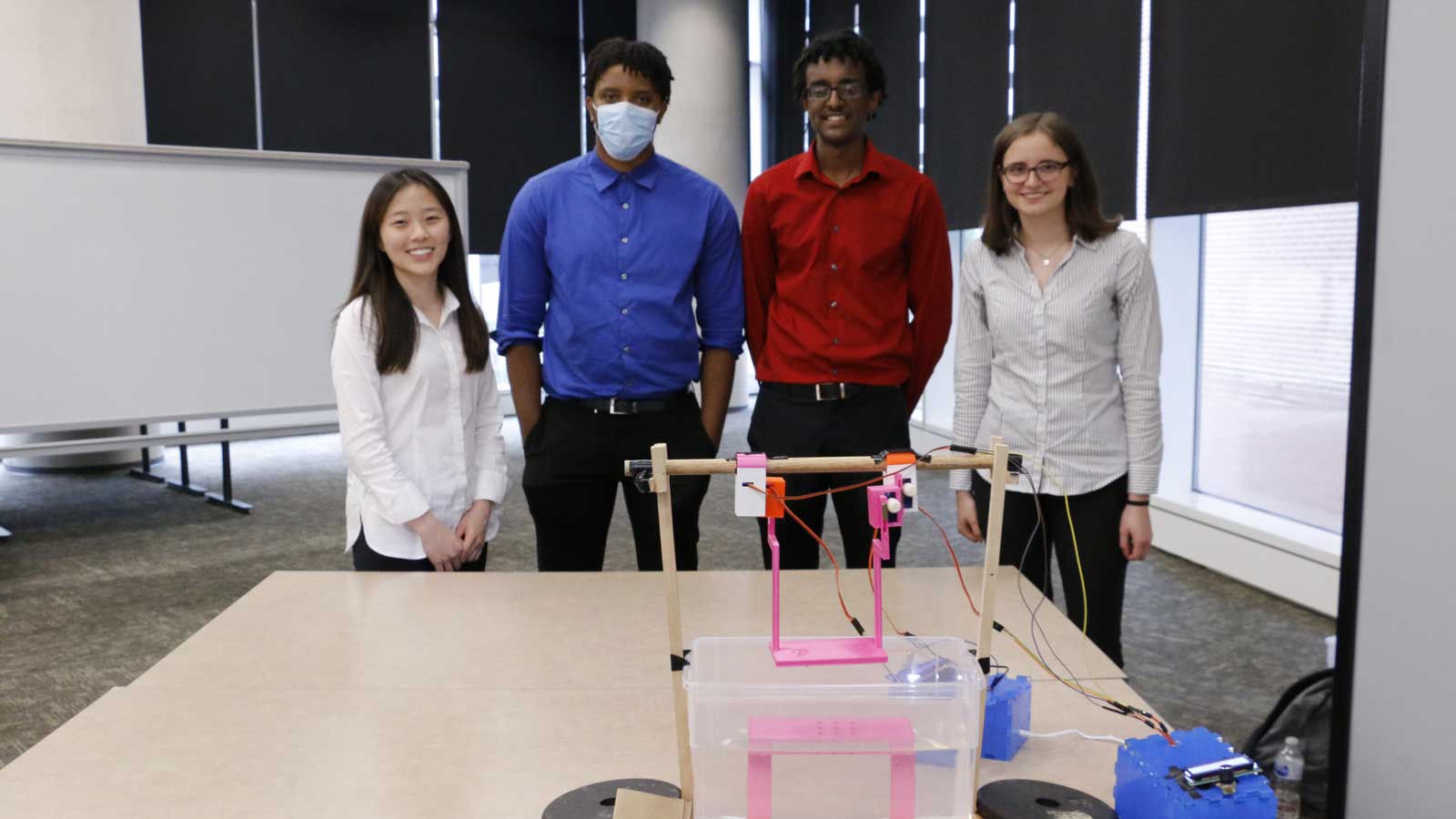Five teams of undergraduates from Rice University, Prairie View A&M University, and the University of Texas at Austin have spent the first six weeks of summer designing biomedical devices as interns in the Rice 360 Institute for Global Health Technologies and the Oshman Engineering Design Kitchen (OEDK).
The interns presented their projects to staff and students of Rice 360 during the Internship Showcase held July 13 in the Bioscience Research Collaborative.
“We are inspired by the passion and creativity of student interns, and are proud of what they have accomplished in six weeks. The showcase gave them the opportunity to share their innovations and designs,” said Ashley Taylor, Rice 360’s director of education.
The summer internship program permits students from various disciplines to work together to solve global health challenges. Students studying biology, engineering, computer science, economics and policy address such challenges as preventing water-borne illness, and equipment sterilization.
Started in 2008, the internships have previously been held in Malawi, Brazil and Tanzania, but because of the pandemic the program was held this summer on the Rice campus at the OEDK.
The teams and their projects are:
Now UV Me, Now U Don’t
- Abby Dowse, bioengineering (BIOE) junior
- Vanessa Garlepp, BIOE, global health technologies minor, junior
- Fadeel Khan, BIOE junior
With the onset of COVID-19 and shortages in some parts of the world of masks and other personal protective equipment (PPE), the interns devised a low-cost system for sterilizing PPE. They created a low-cost mask sterilization chamber from a 55-gallon oil drum fitted with ultraviolet lights and a rack for holding masks.
Breathe Easy
- Alvin Ibeabuchi, mechanical engineering (MECH) senior, Prairie View A&M University
- Matthew Gutierrez, chemistry sophomore
- Chinwe Appio-Riley, kinesiology, graduating senior
- Alois Chipfurutse, MECH sophomore
Bag-valve masks are hand-operated devices that provide emergency ventilation for patients unable to breathe on their own. The team has developed a monitoring device to be placed between the mask and the bag that indicates the rate and flow of oxygen being pumped.
PetriFI- field
- Sara Barker, MECH senior
- Kenton Roberts, MECH sophomore
- Nancy Lindsey, MECH sophomore
- Teja Paturu, biosciences (cell biology and genetics concentration) senior
Water-borne diseases claim some 3 million lives each year. Testing for potable water in under-resourced areas without access to laboratories is difficult. The team created an open-source portable water-testing system designed to test for the presence of E.-coli., a marker for other pathogens.
HeartAche
- Rachel Lee, BIOE sophomore
- Kaitlyn Heinztelman, biochemistry and cell biology senior
- Samuel Hadgu, ChBE junior
- Christopher Nweke, MECH senior, Prairie View A&M University
The team developed a way to mimic heartbeat and lung movement in sample tissue used in training medical professions to perform cardiac ablation. The procedure scars tissue in the heart to block abnormal electrical signals and restore normal heart rhythm. Mimicking the motion of the heart and lungs makes the training more realistic.
PIPER
- Elise Erickson, social policy analysis and economics junior
- Shannon McGill, BIOE sophomore
- Alex Natelson, aerospace engineering sophomore, University of Texas at Austin
- Shivani Kulkarni, neuroscience and cognitive science sophomore
The team created PIPER (Pediatric Instructional Pelvic Exam Resource ), a realistic training model for teaching clinicians to perform pediatric pelvic exams on children who have been the victims of sexual abuse. Pelvic models exist for adult anatomy but PIPER was developed to fill the need for a training model based on pediatric anatomy.

